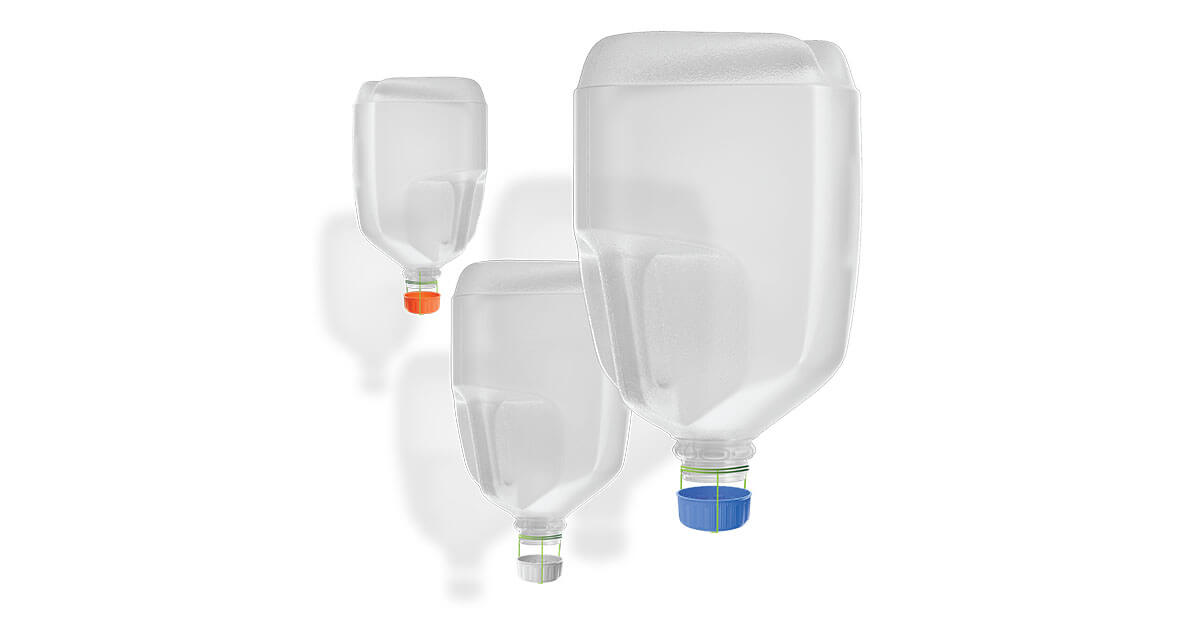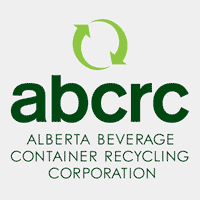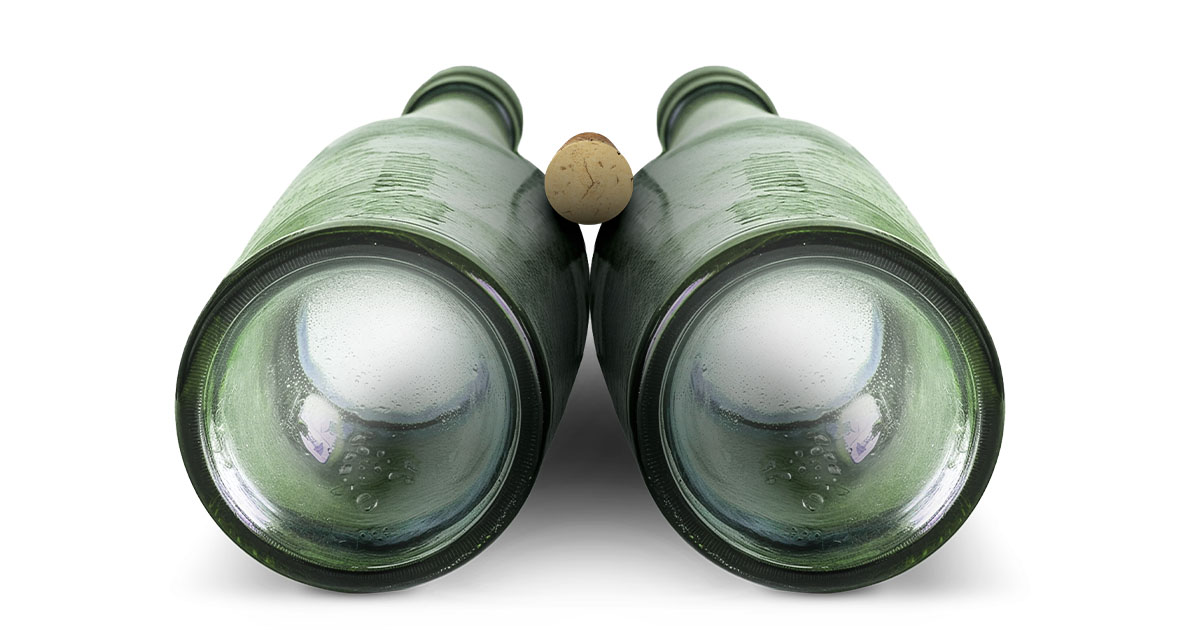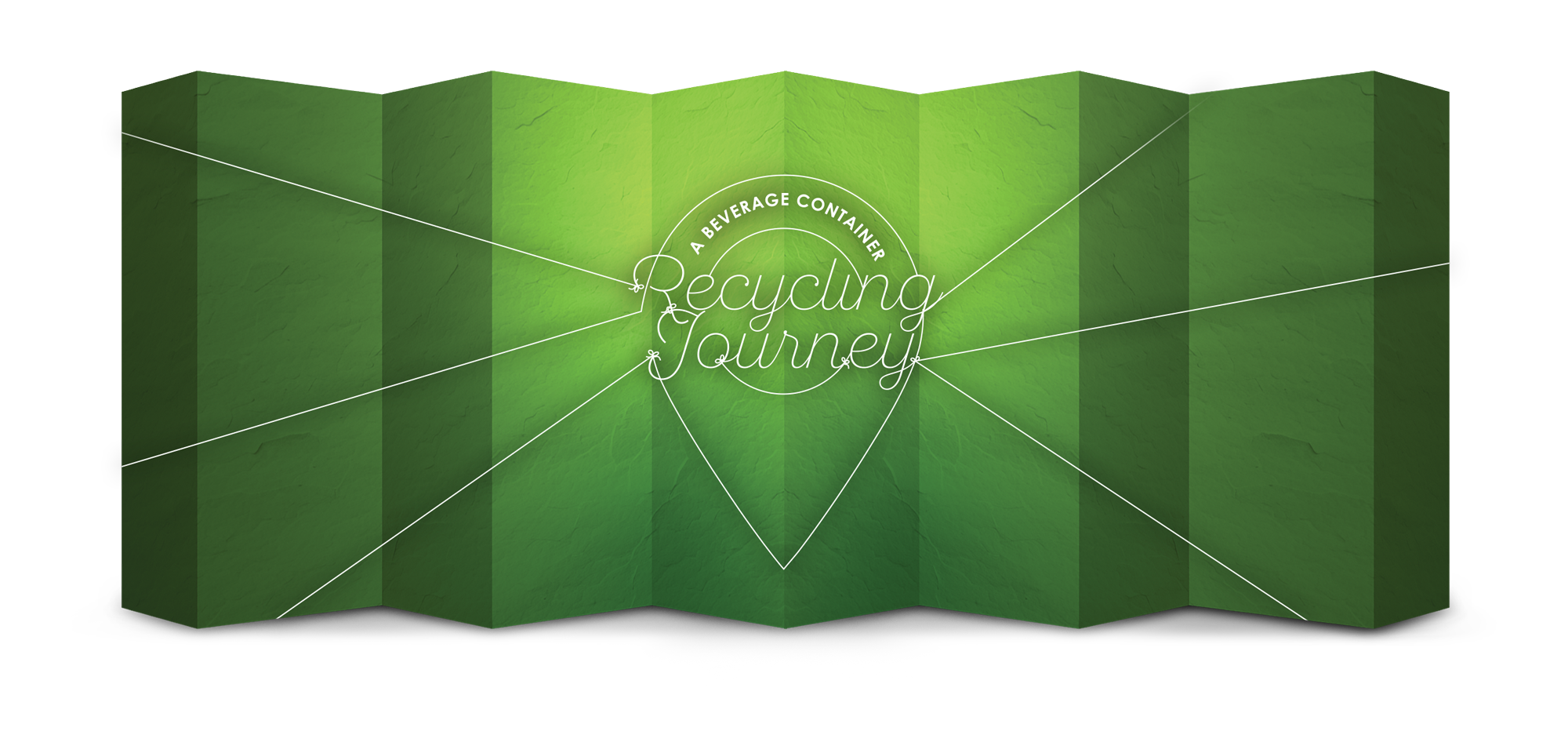
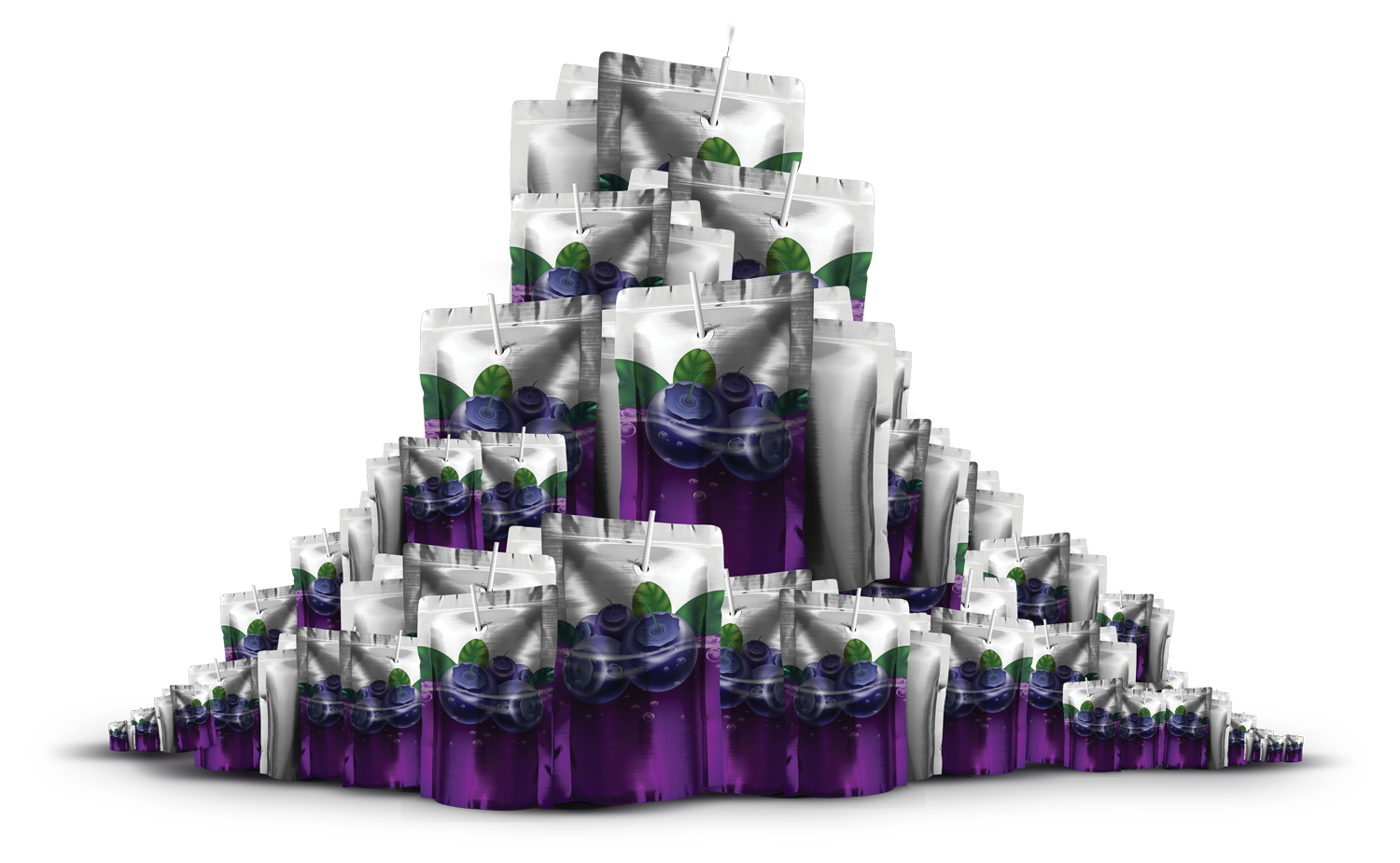
Every Drink Pouch Lifts Us Higher
Welcome to ABCRC’s journey into the world of drink pouch recycling!
In 2023, Albertans purchased 14.8 million drink pouches recovering only 8.5 million of them.
As an innovative leader in beverage container recycling, ABCRC is tackling the unique challenges posed by these multi-layered containers.
What Are Drink Pouches?
Drink pouches are beverage containers made of aluminum and plastic layers, often including a straw to drink from.
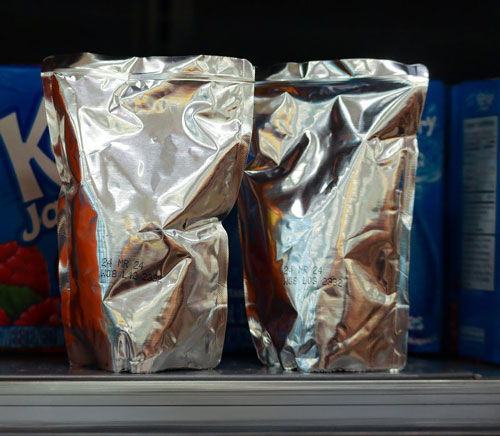
How are drink pouches recycled in Alberta?
Currently, all recovered drink pouches in Alberta are sent to Merlin Plastics in British Columbia for processing. From there, they are incinerated and used as an energy fuel source, offsetting the use of natural gas.
Understanding Waste-to-Energy (Resource Recovery)
Waste-to-energy – also called resource recovery – is a method of managing materials that cannot be recycled. Contrary to common misconceptions, modern incineration processes are controlled and environmentally regulated.
When drink pouches are used in resource recovery programs, they replace fossil fuels like natural gas in industrial processes. This method not only diverts waste from landfills, where it may or may not decompose and release methane gas (depending on the material) but becomes an energy source for industrial use.
Resource recovery serves as a valuable solution, ensuring that these materials contribute to energy production rather than sitting idle in landfills for decades.
Looking to the Future: Pioneering Solutions for Drink Pouch Recycling
At ABCRC, we’re not content with the status quo when it comes to recycling challenging materials like drink pouches. As a leader in beverage container recycling, we’re continually advancing innovative solutions to ensure a sustainable future for all container types. Recognizing the unique challenges posed by multi-layered drink pouches, we’re embarking on an exciting journey of research and development set to begin in 2025.
Our team is actively collaborating with leading applied researchers to better understand and explore potential recycling methods specifically tailored for these complex containers for separating the aluminum and plastic layers found in drink pouches – a crucial step toward more efficient and effective recycling.
Our goal is to bring a made-in-Alberta solution that could transform how these materials are processed and identify potential economic opportunities that contribute to building Alberta’s circular economy.
How You Can Help
- Return Your Pouches: Bring your empty drink pouches to any of the 220+ depots across Alberta.
- Spread the Word: Share this information with friends and family to increase awareness.
- Stay Tuned: Keep an eye out for updates on our research and new recycling methods.
Together, we can redefine drink pouch recycling in Alberta, expanding the possibilities for beverage container recycling.
Alberta’s circular economy turns glass into green growth
 From a glass bottle to fibreglass, the journey of a single beverage container in Alberta’s beverage container recycling system showcases the triumph of a circular economy.
From a glass bottle to fibreglass, the journey of a single beverage container in Alberta’s beverage container recycling system showcases the triumph of a circular economy.
When you toss a glass beverage container into the garbage, it might be lost forever. But if you return it to one of the more than 200 bottle depots in Alberta, you can trust that its story won’t end there.
Alberta’s beverage recycling infrastructure has an extensive network of bottle depots and two central processing facilities that feed recovered containers to recycling companies that transform them into secondary materials. Through this system, according to the Alberta Beverage Container Recycling Corporation (ABCRC), the energy saved from recycling one glass bottle can run a 100-watt light bulb for four hours.
This process not only reduces costs for manufacturers that can integrate recycled material into their operations but also promotes sustainability by repurposing waste material while driving economic growth. And it all starts at the consumer level — every time an Albertan returns a beverage container, they divert it from landfills and give it new life. In 2023 alone, 51,629 tonnes of glass bottles were recycled.
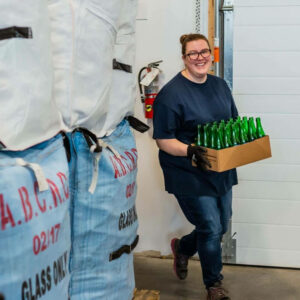
According to the latest sustainability report from ABCRC, Albertans recycled a record 2.16 billion beverage containers last year, diverting more than 99 million kg of material from landfills. ABCRC, while already achieving a nearly 85 per cent return rate, aims to do better by continuing to partner with local businesses to find novel ways to turn recycled materials into new commodities for critical production streams.
For instance, that glass bottle will make its way to Vitreous Glass Inc., a local producer in Airdrie. It readies 99 per cent post-consumer glass by cleaning, crushing and processing it into a material called GlasSand. GlasSand is then sold to fibreglass insulation manufacturers to create fibreglass insulation for homes and other buildings.
“Our processing plant in Airdrie helps keep glass that would otherwise clog up landfills in circulation and uses it for crucial construction projects,” says Darcy Forbes, vice president and chief operating officer of Vitreous Glass. “Partnering with Alberta Beverage Container Recycling Corporation allows us to spark sustainable choices and economic diversification in Alberta.”

ABCRC is Vitreous Glass’s largest supplier, but the company also incorporates glass waste from other recycling systems in the country. The sustainable fibreglass insulation that results services the northwest region of North America.
“Following the journey of a single beverage container, from recycling bin to bottle depot to recycled material, shows how recycling drives economic growth, job creation and innovation in our critical industries,” says Guy West, president and CEO of ABCRC.
Just by sourcing raw materials from recycled sources, businesses can shave down operating costs while reinvesting in the circular economy. The circular process is facilitated by local producers’ proximity to sources of clean glass, such as beverage depots after glass bottles have been processed.
“Moving toward a circular economy is a win-win-win,” says West. “Waste is diverted from landfills, local businesses benefit from lower costs and consumers reap economic and community rewards.”2
A green circular economy is good for business
 ABCRC’s role in the circular economy highlights the synergy between environmental sustainability and economic growth.
ABCRC’s role in the circular economy highlights the synergy between environmental sustainability and economic growth.
Sustainability efforts are cropping up in every part of our daily lives, but it’s easy to forget one of the easiest and most efficient ways to transform post-consumer materials into new raw materials — through recycling our used beverage containers.
According to the latest Alberta Beverage Container Recycling Corporation (ABCRC) report, Albertans boasted an 85 per cent beverage container return rate in 2023, amounting to more than two billion non-refillable containers recovered by ABCRC and sold to recycling partners.
Not only does beverage container recycling help the planet by diverting waste from landfills, but it also provides a reliable and constant source of input material to industries that transform recycled products into secondary materials. For example, the construction industry uses fibreglass to insulate homes — a versatile material made right here in Alberta from glass beverage containers, like juice bottles.
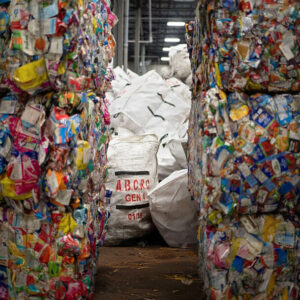 “Following the journey of a single bottle returned to a depot can show you how the circular economy impacts every part of our communities,” says Guy West, president and CEO of ABCRC. “The financial incentive for both consumers and businesses has never been higher.”
“Following the journey of a single bottle returned to a depot can show you how the circular economy impacts every part of our communities,” says Guy West, president and CEO of ABCRC. “The financial incentive for both consumers and businesses has never been higher.”
The economic value of Alberta’s beverage container recycling program is manifold, according to a recent Recycling Council of Alberta report (Quantifying the Economic Value of Alberta’s Recycling Programs, 2019). A total of 4,500 jobs are tied to recycling activities in the province, with indirect roles tallying up to 7,500 jobs overall, according to the report. The beverage container recycling sector plays a large part in this number thanks to the more than 220 Bottle Depots in Alberta that collect and sort containers that ABCRC then processes and transports to end markets.
According to the same report, the value of material recycled in Alberta each year adds up to roughly $70 million, while the total gross value added (GVA) from the recycling sector in Alberta in 2018 was estimated at $700 million— a measure of all of the income earned by individuals or businesses involved in recycling processing. Based on the projected growth of the recycling sector, the potential value of the GVA could double to $1.4 billion — and these figures don’t even take secondary material usage into account.
“Since recycling itself is such a valuable market, it allows businesses to contribute to the circular economy in a way where both their customers and bottom lines benefit,” says West.
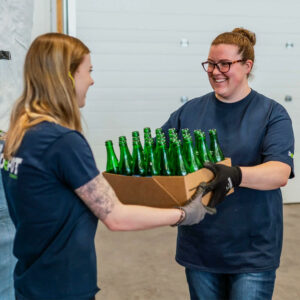 Just by sourcing raw materials from recycled sources, businesses can shave down operating costs while reinvesting in the circular economy. This strategy supports local job creation, sustainable practices and community well-being.
Just by sourcing raw materials from recycled sources, businesses can shave down operating costs while reinvesting in the circular economy. This strategy supports local job creation, sustainable practices and community well-being.
At the same time, a strong recycling infrastructure opens the door to innovation — for both businesses and communities.
“Alberta has such a high rate of beverage container returns because communities feel the benefits of the system,” says West. “Just imagine what we could do if that return rate hit 100 per cent.”
MORE ARTICLES COMING SOON
Landing Lofty Ideas
